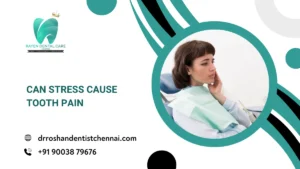What is a dental hygienist, and why does your smile rely on them? In this blog, we’ll break down everything you need to know about dental hygienists, from how they differ from dentists to what they actually do daily. If you’re considering visiting one or becoming one yourself, this guide will answer all your questions. Continue reading to understand the significance of a dental hygienist and how they help keep your teeth and gums clean, healthy, and happy.
Many individuals visit the dentist but don’t fully understand what a dental hygienist does. So, what exactly is a dental hygienist? To put it plainly, a dental hygienist is a certified professional who helps you maintain a clean and healthy mouth. They work in collaboration with dentists, although they have distinct tasks. A hygienist is the one who cleans your teeth, looks for signs of gum disease, and educates you on how to care for your teeth at home.
Dental Hygienist vs. Dentist: What’s the Difference?
You might wonder if a dental hygienist is identical to a dentist? No, they aren’t. While both work in dental care, they have distinct jobs and varied levels of training.
Key Differences:
- A dentist diagnoses and treats dental issues like cavities, root canals, and tooth decay.
- A dental hygienist concentrates more on cleaning your teeth, checking gum health, and teaching you about dental hygiene.
Is a dental hygienist crucial? Yes, as they’re the first line of defense in preventing dental problems prior to onset.
Typical Dental Hygienist Duties
What does a dental hygienist do daily? Here are some common tasks:
1. Cleaning Teeth and Removing Plaque/Tartar
This is the most typical task of a dental hygienist. They utilize specialized tools to clean your teeth by eliminating plaque (a soft, adhesive layer of bacteria) and tartar (hardened plaque that brushing can’t get rid of). This keeps your teeth clean, lustrous, and aids in preventing cavities and gum disease.
2. Taking X-rays
Occasionally, issues hide beneath the surface of your teeth or gums. Dental hygienists take X-rays to help the dentist see things that aren’t visible to the bare eye such as tooth decay between teeth, infections, or bone loss.
3. Checking for Gum Disease
Hygienists check your gums for signs of gum disease, like redness, swelling, bleeding, or receding gums. They gently measure the depth of spaces between your teeth and gums to see if there’s any harmstarting.
4. Educating Patients on Brushing and Flossing
They instruct you on how to brush and floss properly, because doing it the correct way makes a considerable difference. A dental hygienist will also suggest the best tooth brush, tooth paste, or floss based on your requirements.
5. Applying Fluoride Treatments
After cleaning, a hygienist could apply a fluoride gel or foam to your teeth. This treatment helps strengthen your tooth enamel and averts cavities, particularly in children and adolescents, though adults can benefit also.
6. Making Notes for the Dentist to Review
Everything the hygienist notes like areas of concern, gum health, or patient complaints is recorded and shared with the dentist. These notes help the dentist make a diagnosis or treatment plan.
These duties might sound simple, but they are super important. Without regular cleanings, small problems can turn into bigger ones quickly.

How Long Does it Take to Become a Dental Hygienist?
Considering becoming one? Here’s the information you’ll need. Becoming a dental hygienist generally requires:
- A high school diploma or equivalent
- Finishinga dental hygiene program (2–3 years)
- Passing national and state licensingtests
It’s shorter than becoming a dentist, however, it still takes time and exertion. You also have to like working with people, since you’ll be doing it all day. Is a dental hygienist crucial? Absolutely. They’re trained to notice early issues and prevent significant dental problems.
How Often Should I Visit a Hygienist?
Most individuals should see a dental hygienist every 6 months. However, some may need to go more frequently, especially if they have gum disease or other dental troubles.
Why Regular Visits Matter:
- Removes tartar that brushing alone can’t handle
- Spots early signs of tooth decay
- Helps prevent gum disease
- Keeps your breath fresh and your smile bright
What does a dental hygienist do during these visits? They clean, assess, advise, and keep you on track with your oral health.
What Are the Benefits of Visiting a Hygienist?
Going to a dental hygienist isn’t solely about a clean sensation; it’s about maintaining your whole mouth healthy.
Top Benefits:
- Prevents bad breath
- Reduces risk of gum disease and cavities
- Detects problems early
- Saves money on future dental work
- Boosts confidence with a cleaner smile
So, if you’re wondering what is a dental hygienist good for it’s all this and more!
Tips for Perfect Morning Oral Hygiene
1. Hydrate Right After Waking Up
Start your day by drinking a glass of water. This straight forward step helps rinse away over night bacteria and stimulates saliva production, which is vital for neutralizing acids and safe guarding tooth enamel.
2. Wait Before Brushing After Eating
If you’ve eaten acidic foods or drinks like citrus fruits or juice, it’s recommended to wait at least 30 minutes before brushing your teeth. Acidic substances can temporarily soften tooth enamel, and brushing too soon may cause enamel erosion.
3. Use a Soft-Bristled Toothbrush
Choose a soft-bristled toothbrush to gently clean your teeth and gums without causing harm. Replace your toothbrush every two to three months, or sooner if the bristles are worn.
4. Brush with Proper Technique
Brush your teeth for at least two minutes using fluoride toothpaste. Place the toothbrush at a 45-degree angle to your gums and use short, gentle strokes to eliminate plaque and food particles .
5. Don’t Skip Flossing
Flossing daily is crucial to remove plaque and food particles from between your teeth and under the gumline, areas that your toothbrush can’t reach .
6. Clean Your Tongue
Use a tongue scraper or your toothbrush to gently clean your tongue. This helps remove bacteria and food particles, contributing to better breath .
7. Rinse with Mouthwash
After brushing and flossing, use an antimicrobial mouthwash to eliminate extra bacteria, reduce plaque, and refresh your breath .
8. Stay Hydrated Throughout the Day
Drinking water throughout the day helps wash away food particles and bacteria, maintaining a clean mouth and promoting saliva production, which naturally protects your teeth .
9. Maintain a Healthy Diet
Consume a balanced diet rich in fruits, vegetables, and dairy products. Limit sugary and acidic foods and beverages, as they can contribute to tooth decay and enamel erosion .
10. Schedule Regular Dental Checkups
Visit your dentist regularly for professional cleanings and checkups. Routine visits assist in detecting potential issues early and ensure your oral health remains in excellent condition.
Conclusion
Let’s bring it all together. What is a dental hygienist? They’re trained professionals who aid in keeping your teeth and gums clean, educate you concerning oral care, and work along side your dentist to spot any issues early. Whether you’re getting a routine cleaning orguidance on improved brushing, a dental hygienist plays alargepart in your overall health. So don’t skip that appointment. Your smile and your future self will thank you.
Read also : Best Dentist in Chennai






